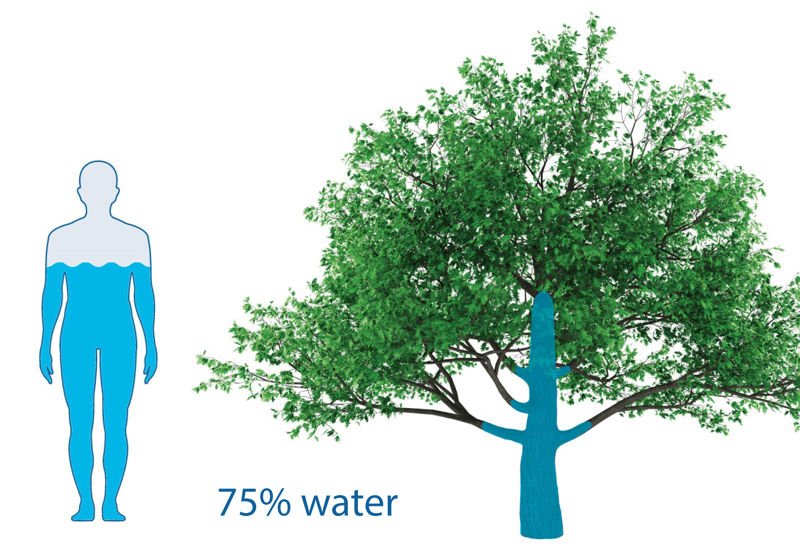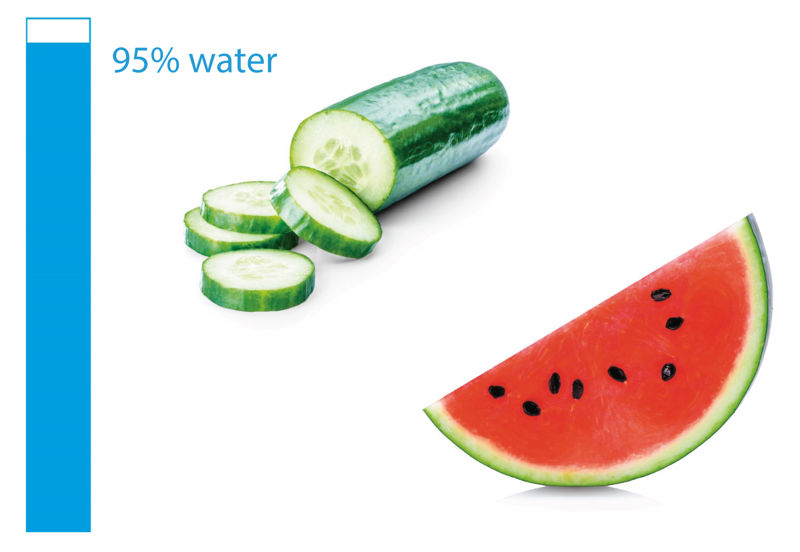- How much water is there on Earth?
- How much water is there in the human body?
- Why is water vital for life?
There is water all around the earth
Life on our planet began in water. Water is important for all organisms on Earth, no plant or animal can live without it.
If we look at the globe, we see that the seas cover almost three-quarters of Earth's surface. There is also a lot of water on land. However, far more than in rivers and lakes, it is found in the soil and even deeper in the Earth's crust. Even in the air, there is water as water vapour. There is a lot of water in the glaciers and polar regions in the form of ice and snow.
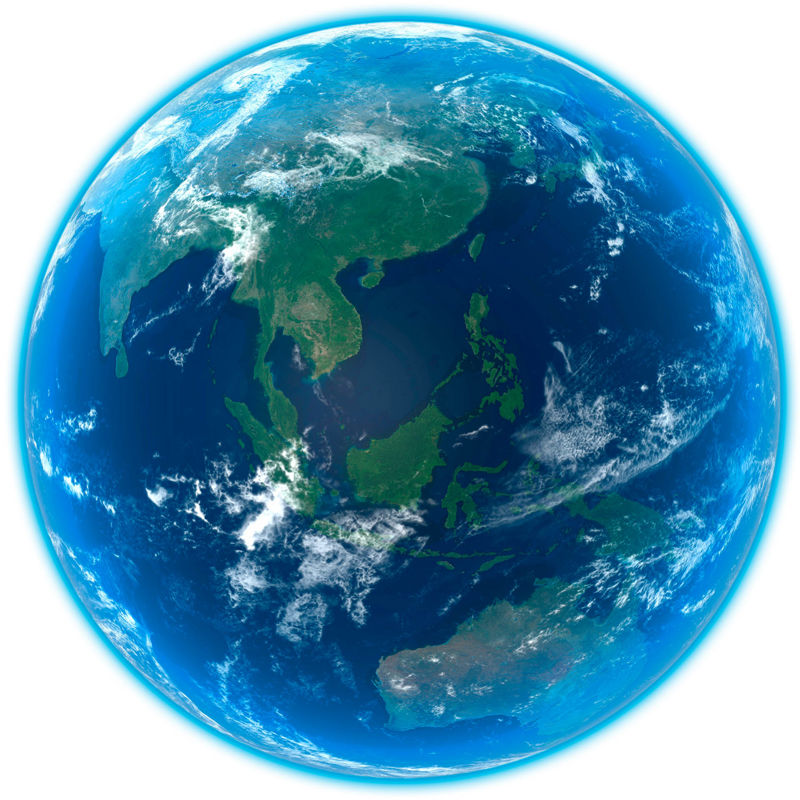
Most of the water on Earth is seawater, but it is salty, so people and most animals cannot drink it. There is very little freshwater compared to seawater. However, most of the freshwater is stuck as snow and ice in glaciers and icebergs. Thus, the freshwater available to us for consumption (groundwater, lakes and rivers) makes up just a small amount of the entire Earth's water.

- There is more freshwater on Earth than seawater.
- There is more seawater on Earth than freshwater.
- Most of the freshwater is snow and ice.
- Most of the freshwater is in rivers and lakes.
Think!
- Why could we call Earth a "sphere of water"?
- Why can't we use a large part of the freshwater reserves on Earth?
All living organisms are mostly made of water
Some organisms have more water, some less. Most of our soft body parts are made up of about 75% water. The brain is one of the wettest parts of the body. The water content is the lowest in the bones and teeth. While you are biting a cucumber, you can probably understand that it is mostly water, but even a seemingly dense and hard tree is about 75% water.
- Brain
- Skin
- Teeth
Water is vital
We use water every day: for drinking, washing, cooking, watering plants, and more. Water is so common to us that we rarely think about it. However, without eating, a person can last for weeks, but without drinking, only for 4-5 days.
The human body's daily water requirement depends on age, the weather, activity, health and how much water is remaining in the body. Approximately 2.5 liters of water are excreted daily in the adult body through sweat, urine and breath. The body must recover the lost water, so an adult needs to drink about the same amount of water every day. Drinking water usually makes up more than half of this, and water in food just under half. On a normal day, a child of your age should drink little over a litre of water, and slightly more during exercise or on a hot day.
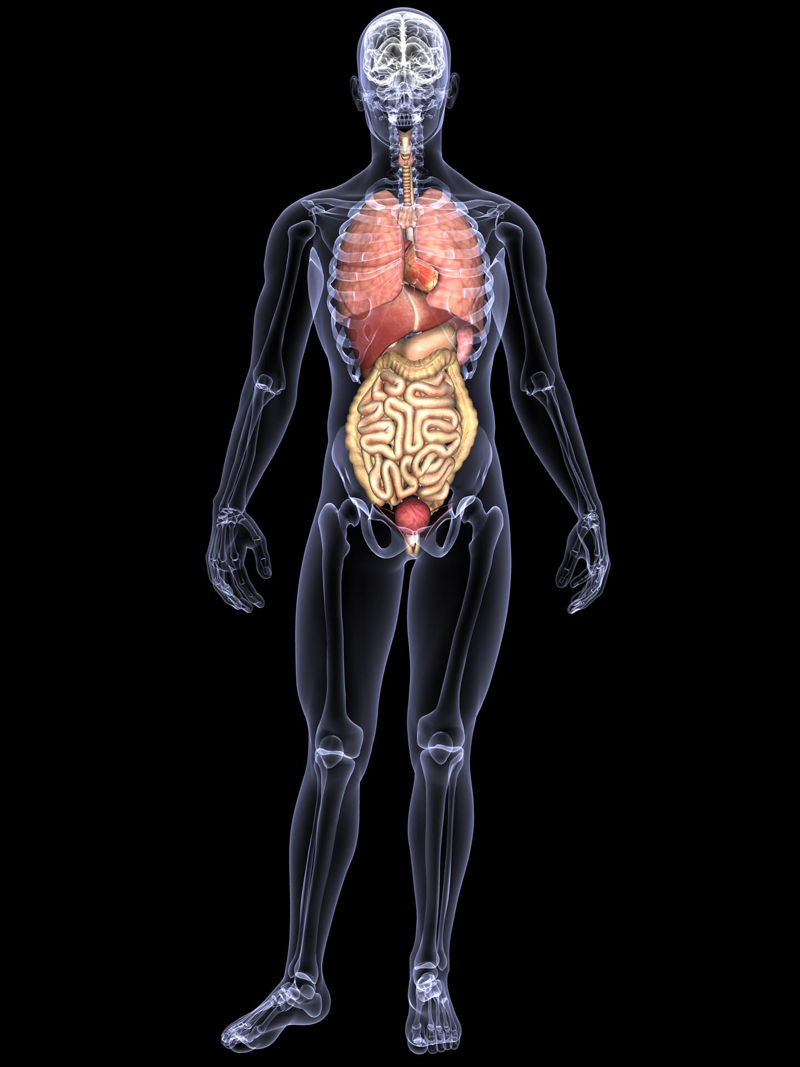
- 1
- 2
- 3
- 4
Think!
- What have you used water for today?
Bonus: Why can't humans drink seawater?
Humans cannot drink salty seawater, because that will only increase their thirst. Of course, it depends on the salinity of the particular sea. For example, you cannot drink from the Atlantic Ocean because the salinity is 3.3-3.7%, but the water in the Baltic Sea is low in salt content (0.3-0.9%), and drinking this water does not increase your thirst.
Drinking seawater is also dangerous due to osmosis. The cells in our body are surrounded by a semipermeable coating, known as a membrane. Semipermeable means that it lets some substances through, and blocks the movement of others. Water can move freely through it, but salt cannot. In nature, the rule is that the amounts of substances try to equalise. When a person drinks seawater, water around the cells is saltier than inside the cells. For the salinity to equalise, the water moves out of the cells, which is dangerous for the cells. For the same reason, potted plants must be replanted every now and then. We water them, and the water evaporates, but the salts remain in the soil. Eventually, the water starts to move from the plants to the soil, and the plants wither.
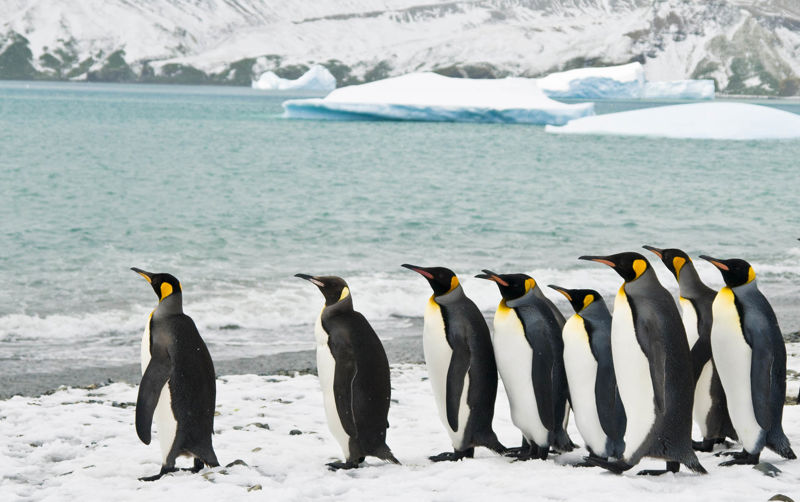
- Water around the cells becomes saltier than on the inside.
- Human drinks salty seawater.
- Water moves out from cells by osmosis.
I now know that…
Water is the basis of life. Almost three-quarters of the Earth's surface is covered with water. All living things consist mainly of water. Water performs many functions in our body. Children should drink a little over a liter of water a day.
